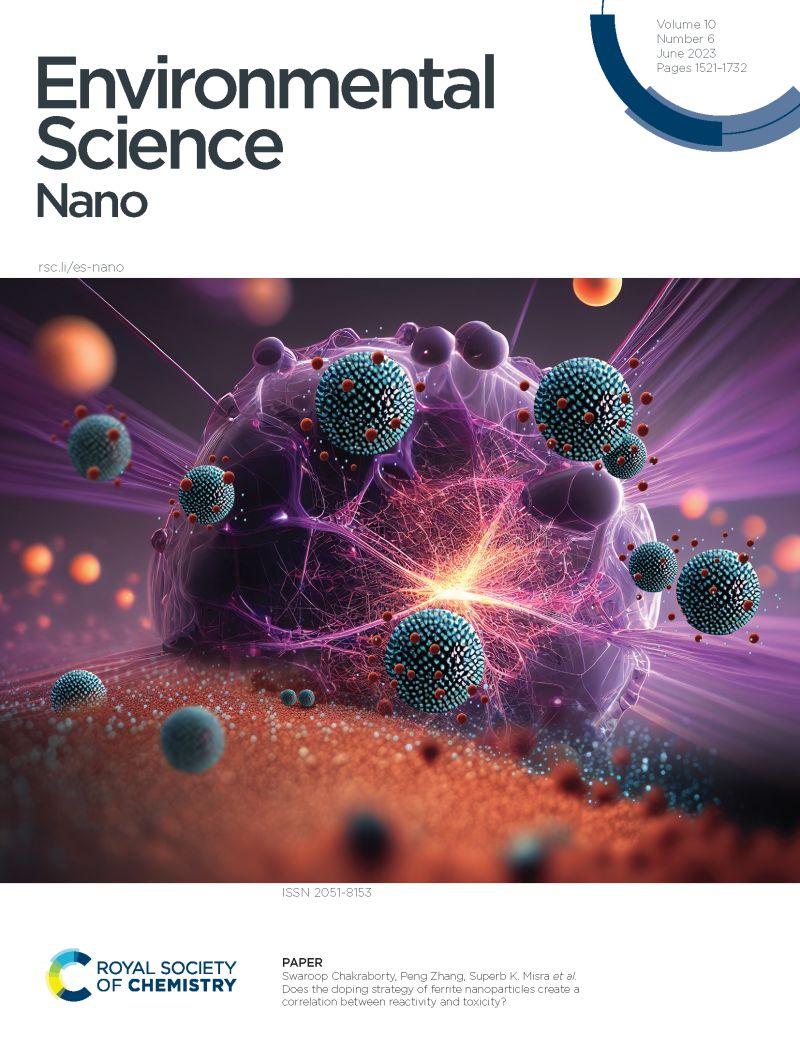Interfacial behavior of ceria grown on graphene oxide and its use for hydrolytic and photocatalytic decomposition of bisphenols A, S, and F
IF 5.8
2区 环境科学与生态学
Q1 CHEMISTRY, MULTIDISCIPLINARY
引用次数: 0
Abstract
Bisphenol-A (BPA) and its structural analogues such as Bisphenol-S (BPS) and F (BPF) are widespread industrial chemicals of great concern in water and other even biological matrices due to their accumulation and toxicological effects including interference with hormones of the human body. In this work, composites based on CeO2 nanoparticles grown in situ on graphene oxide (GO) sheets were prepared by a low-temperature water-based method and used for removal of bisphenols from water. It has been demonstrated that ceria-based nanomaterials can spontaneously decompose BPS containing a sulfonyl functional group by hydrolytic cleavage upon its adsorption, while BPA and BPF can be efficiently decomposed by simulated solar light using CeO2/GO composites as photocatalysts, as shown by the following degradation kinetics and mechanism by HPLC-DAD and HPLC-HRMS. In addition, the study of photophysical and other properties showed that in order to achieve significant interfacial interactions, it is advantageous to use methods of in situ growth of nanoparticles on suitable counterparts, such as graphene oxide.生长在氧化石墨烯上的铈的界面行为及其在水解和光催化分解双酚 A、S 和 F 中的应用
双酚-A(BPA)及其结构类似物,如双酚-S(BPS)和双酚-F(BPF),是水和其他甚至生物基质中广泛存在的工业化学品,由于其积累和毒理效应(包括干扰人体激素)而备受关注。本研究采用低温水基法制备了基于 CeO2 纳米颗粒原位生长在氧化石墨烯(GO)片上的复合材料,并将其用于去除水中的双酚。研究表明,铈基纳米材料在吸附含有磺酰基官能团的双酚 A 后,可通过水解裂解自发分解双酚 BPS,而使用 CeO2/GO 复合材料作为光催化剂,双酚 A 和双酚 F 可在模拟太阳光下被有效分解,其降解动力学和机理可通过 HPLC-DAD 和 HPLC-HRMS 验证。此外,对光物理性质和其他性质的研究表明,为了实现显著的界面相互作用,最好采用在合适的对应物(如氧化石墨烯)上原位生长纳米粒子的方法。
本文章由计算机程序翻译,如有差异,请以英文原文为准。
求助全文
约1分钟内获得全文
求助全文
来源期刊

Environmental Science: Nano
CHEMISTRY, MULTIDISCIPLINARY-ENVIRONMENTAL SCIENCES
CiteScore
12.20
自引率
5.50%
发文量
290
审稿时长
2.1 months
期刊介绍:
Environmental Science: Nano serves as a comprehensive and high-impact peer-reviewed source of information on the design and demonstration of engineered nanomaterials for environment-based applications. It also covers the interactions between engineered, natural, and incidental nanomaterials with biological and environmental systems. This scope includes, but is not limited to, the following topic areas:
Novel nanomaterial-based applications for water, air, soil, food, and energy sustainability
Nanomaterial interactions with biological systems and nanotoxicology
Environmental fate, reactivity, and transformations of nanoscale materials
Nanoscale processes in the environment
Sustainable nanotechnology including rational nanomaterial design, life cycle assessment, risk/benefit analysis
 求助内容:
求助内容: 应助结果提醒方式:
应助结果提醒方式:


